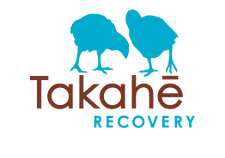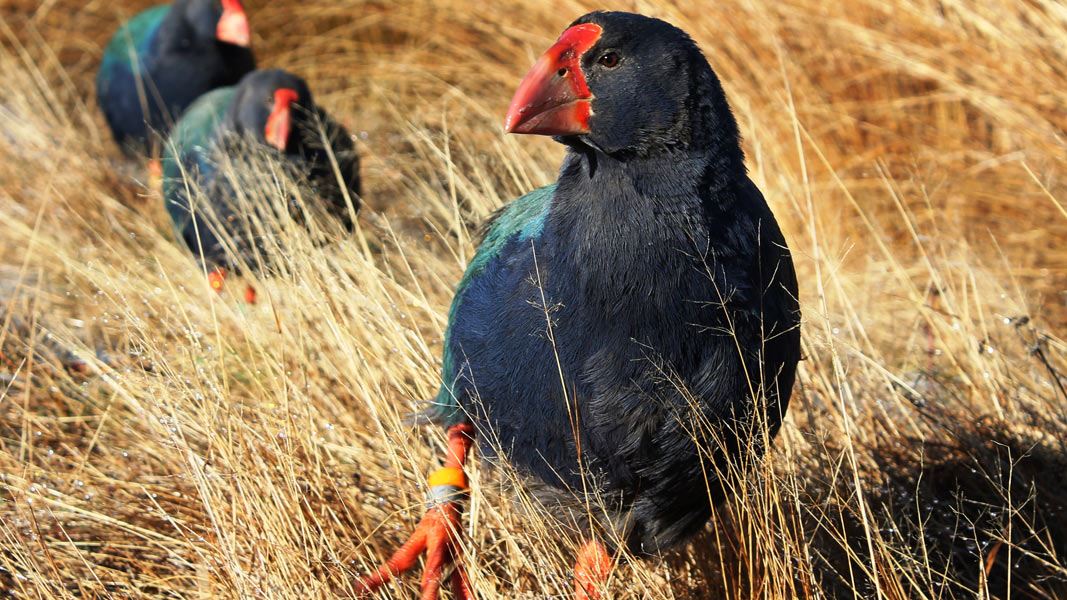
Also known as the “engine room” of the programme, Burwood can house up to 18 breeding pairs and produces the most juveniles per breeding pair.
It’s for these reasons we populate Burwood with the most productive and genetically valuable breeding pairs.
Burwood takahē boot camp

Feeding time in winter is eagerly awaited by the takahē
Image: H Dodson
Burwood is the only sanctuary site that has native tussock grassland, the natural habitat of the takahē. The area also grows summer green fern (Hypolepis millefolium) which is an important source of starches and carbohydrates for wild takahē in the winter. This makes Burwood the best place for takahē to learn foraging skills to ensure they can thrive when released into the wild.
Every year we transfer young birds from sanctuary sites across Aotearoa New Zealand to Burwood for training. These juveniles are fostered to adults at Burwood. These adults welcome the new additions to their family and teach them skills, like how to forage for wild foods like tussock. They are then ready for release into the wild.
Sanctuary sites
Islands and mainland sanctuaries provide a safe home for takahē to produce juveniles to return to the wild and backup the genetics found in the wild population. These places keep the genetic diversity of the takahē population safe. All of these sites are helping the takahē population grow with Burwood Takahē Centre receiving juveniles for ‘boot camp’ before transitioning to wild or ‘recovery’ sites. Our programme wouldn't be successful without their hard work and support.
Managing these small groups of takahē like a big family (metapopulation) to keep the species growing requires a lot of work and intervention. This means it's a big, expensive job.
Donate to Takahē Recovery to help with management of takahē.
Creating new wild populations
Our goal is to return takahē to the wild. This is made possible with the captive breeding at sanctuary sites and Burwood Takahē Centre, adding to the population. Recovery of the species would mean that wild populations can survive without being managed. While we have a good understanding of what takahē need within their habitat, it‘s a challenge to keep pest levels low enough for takahē to thrive.
Learn more about Where takahē live so you can visit one.
